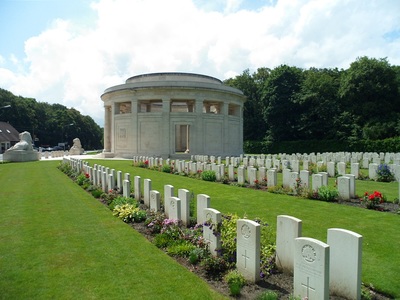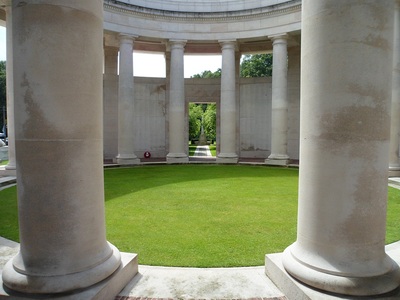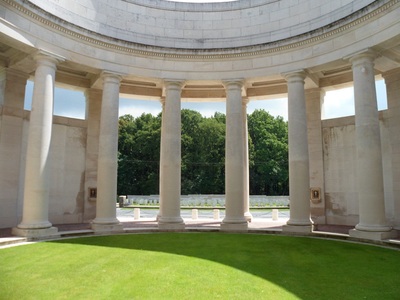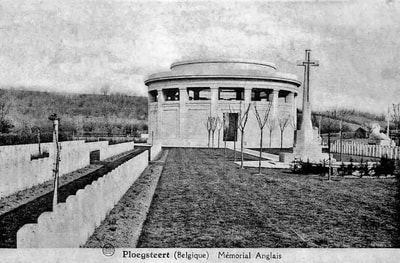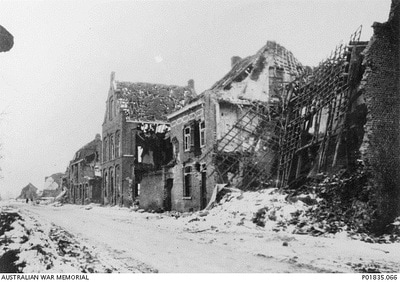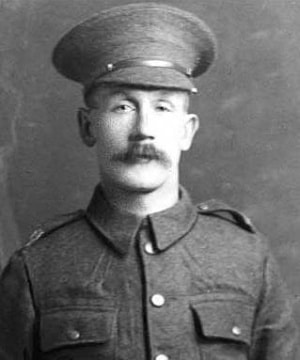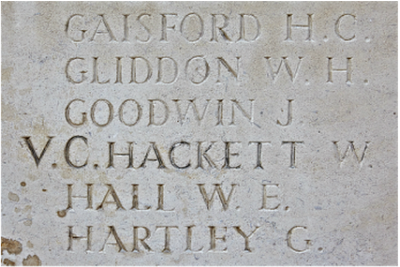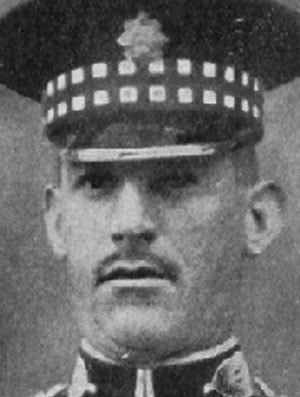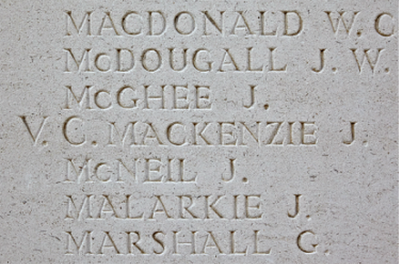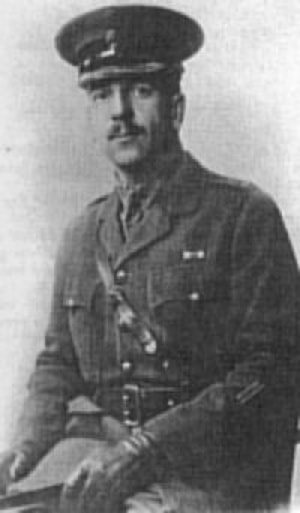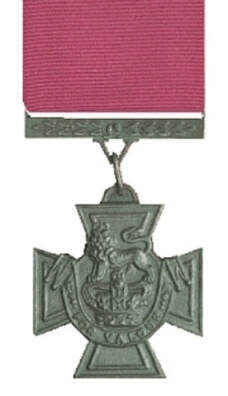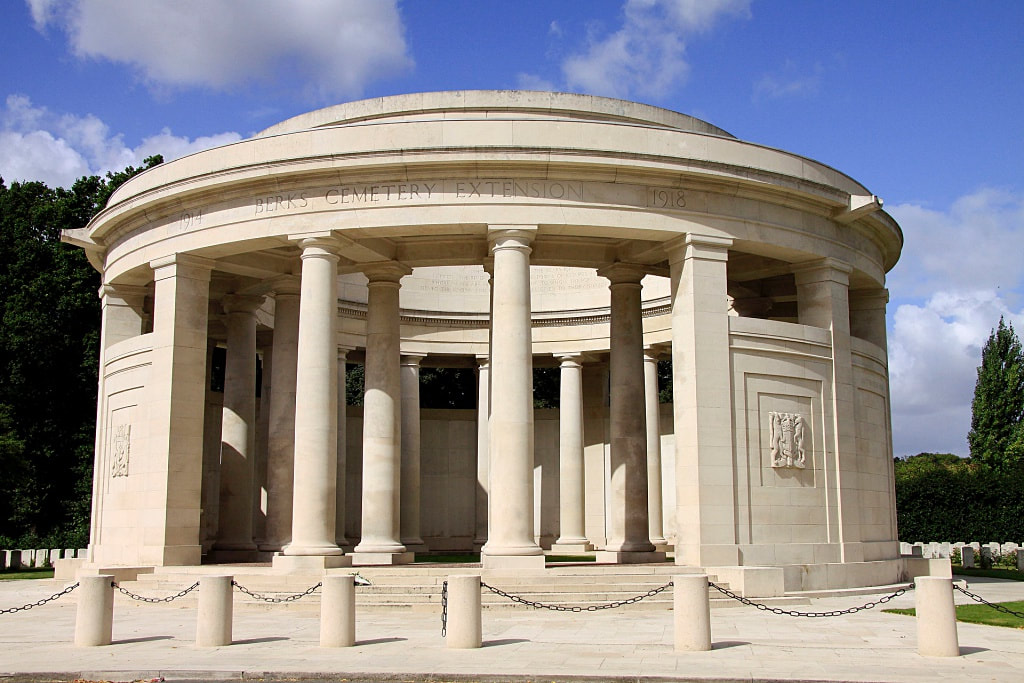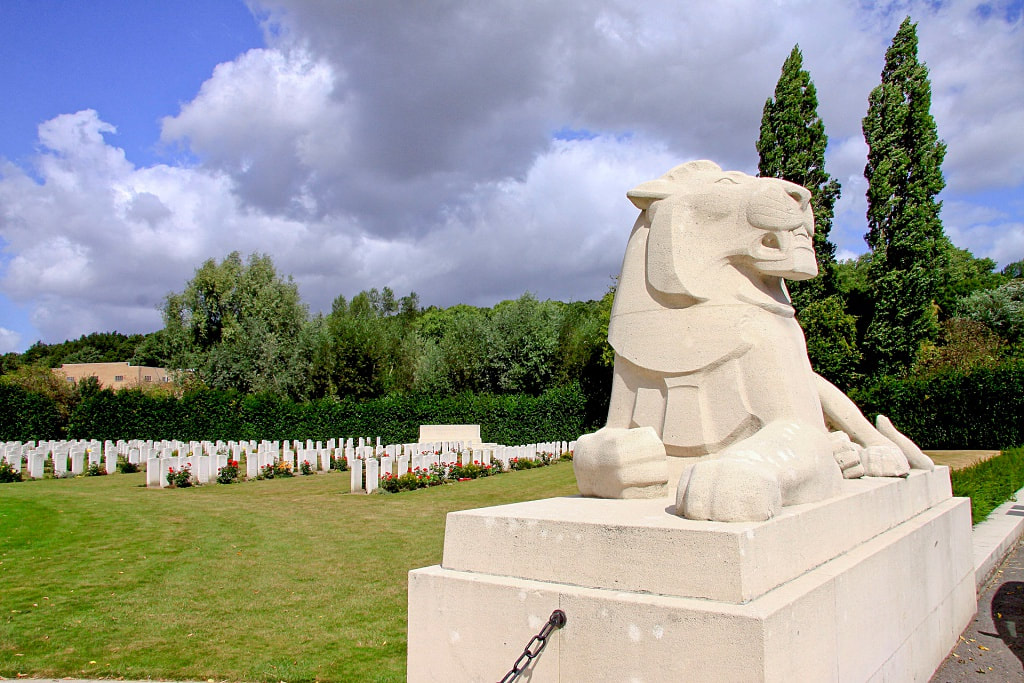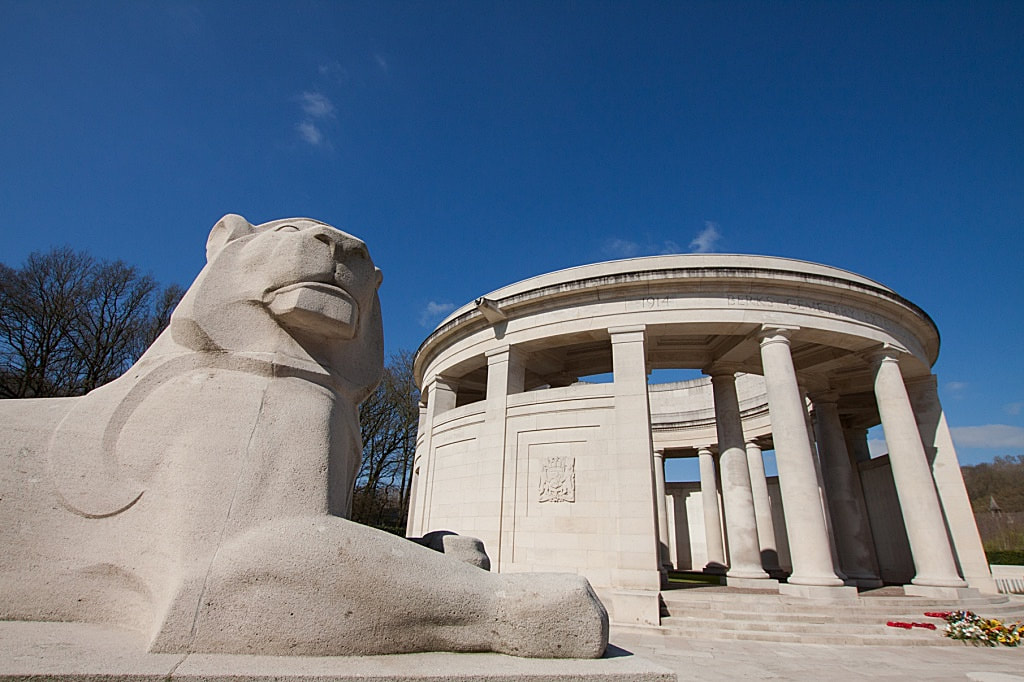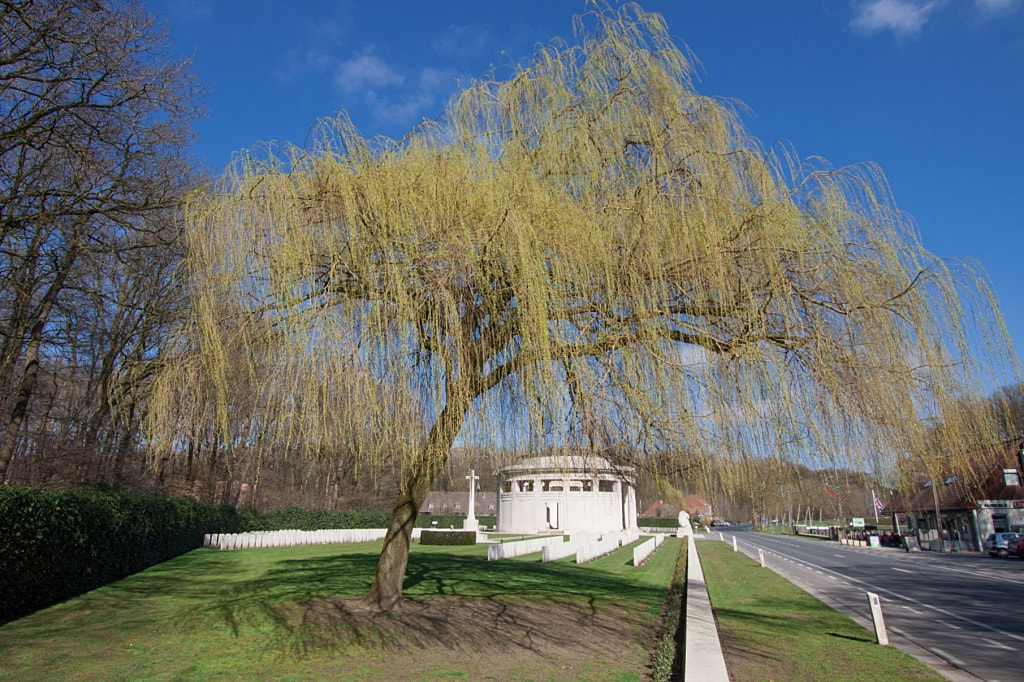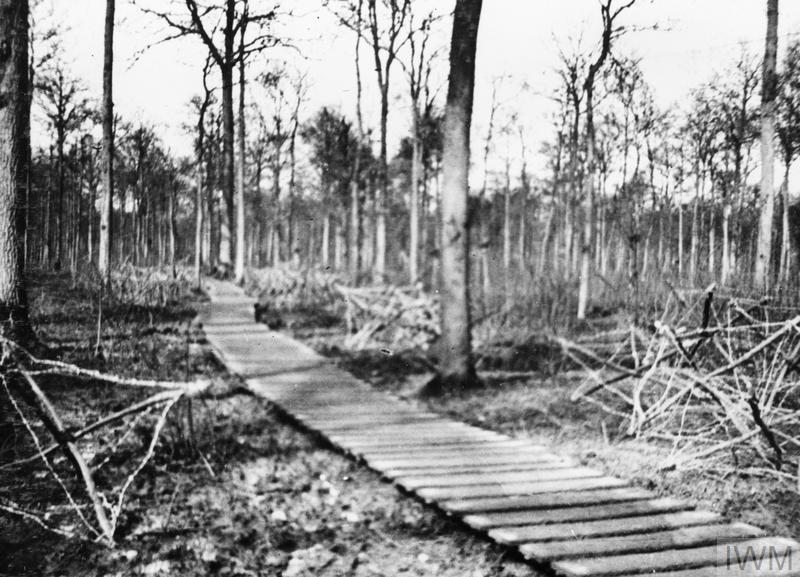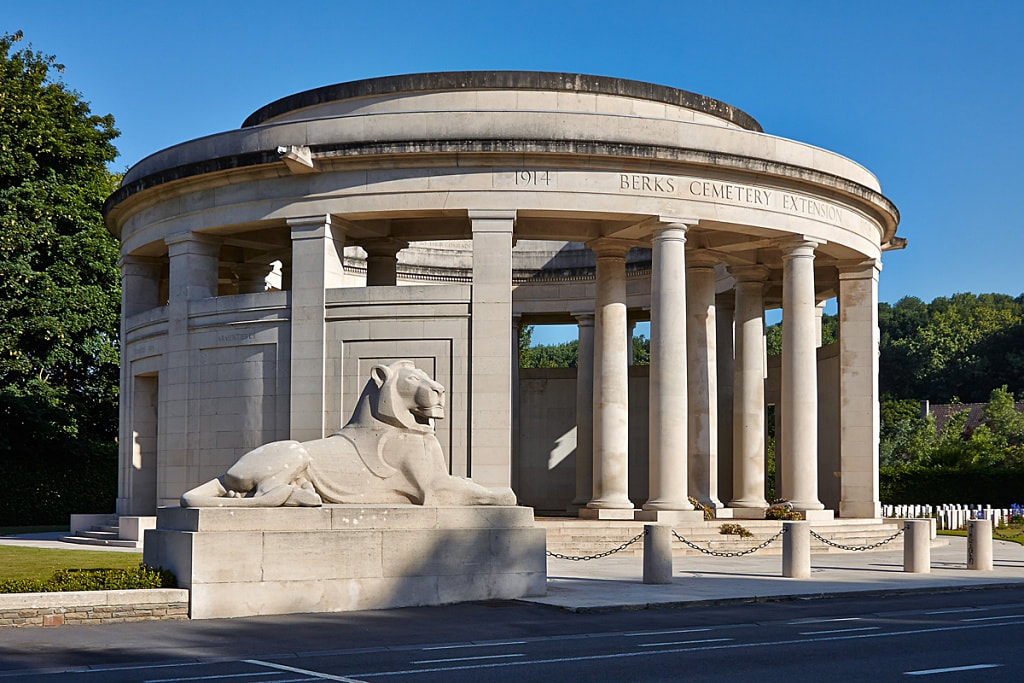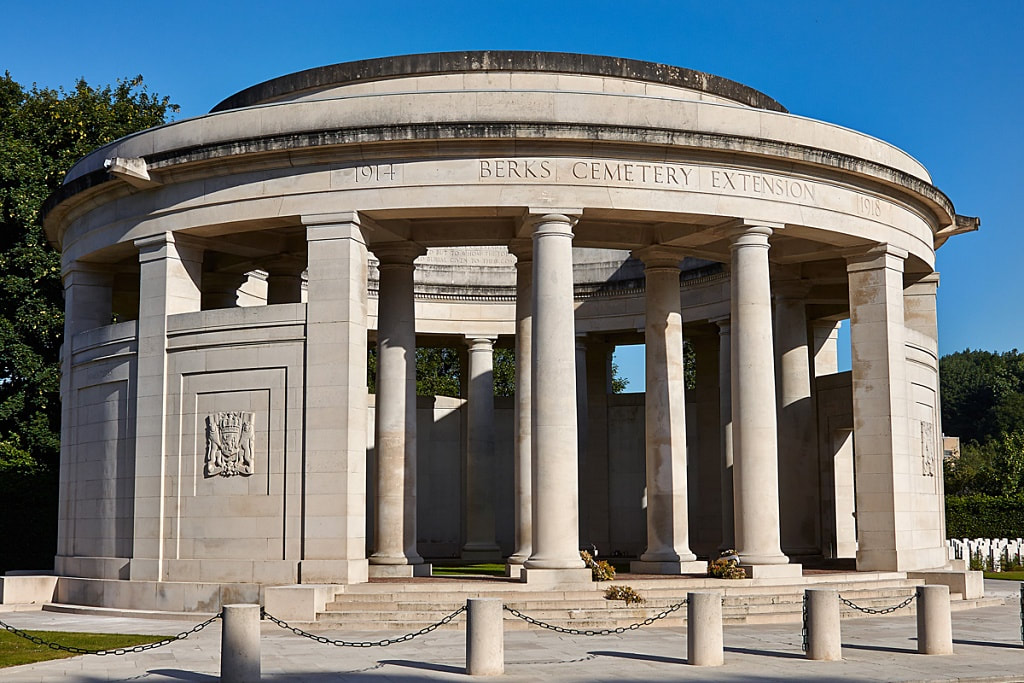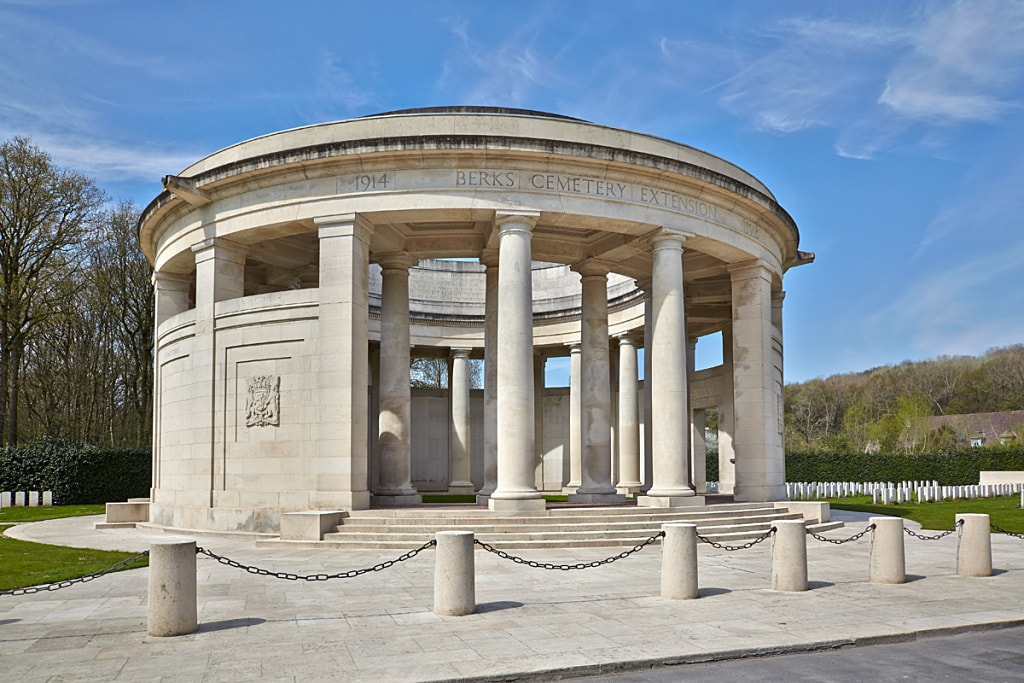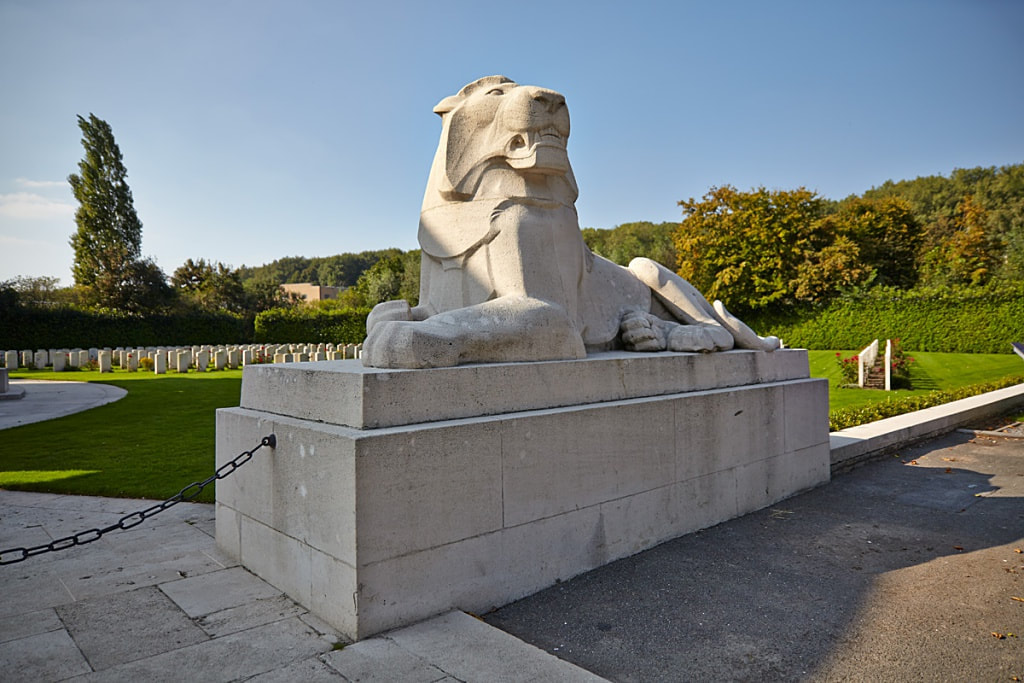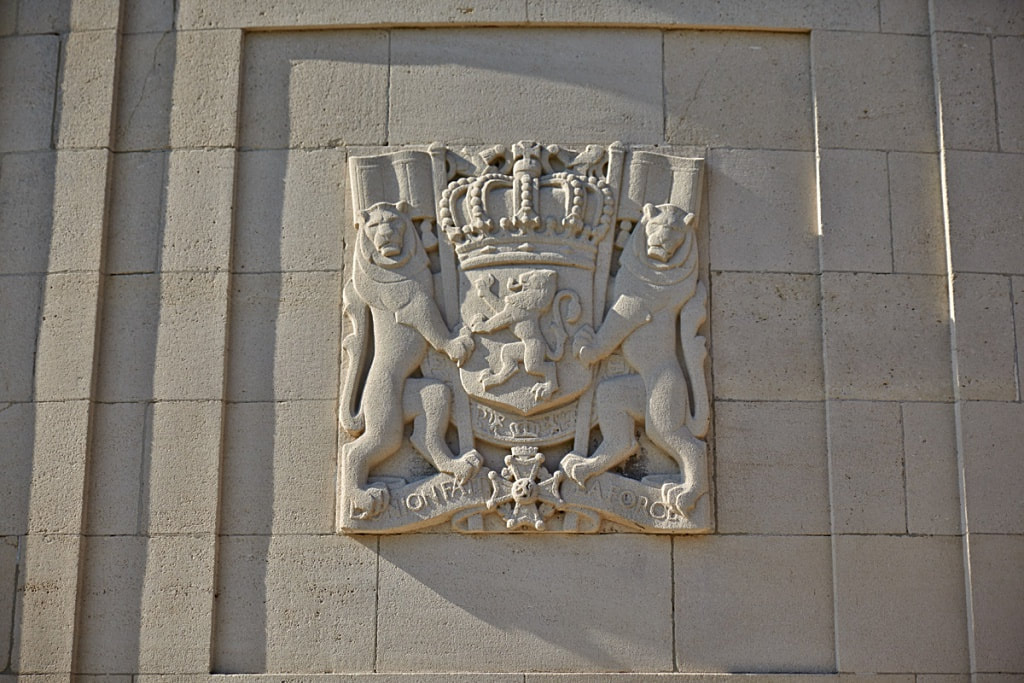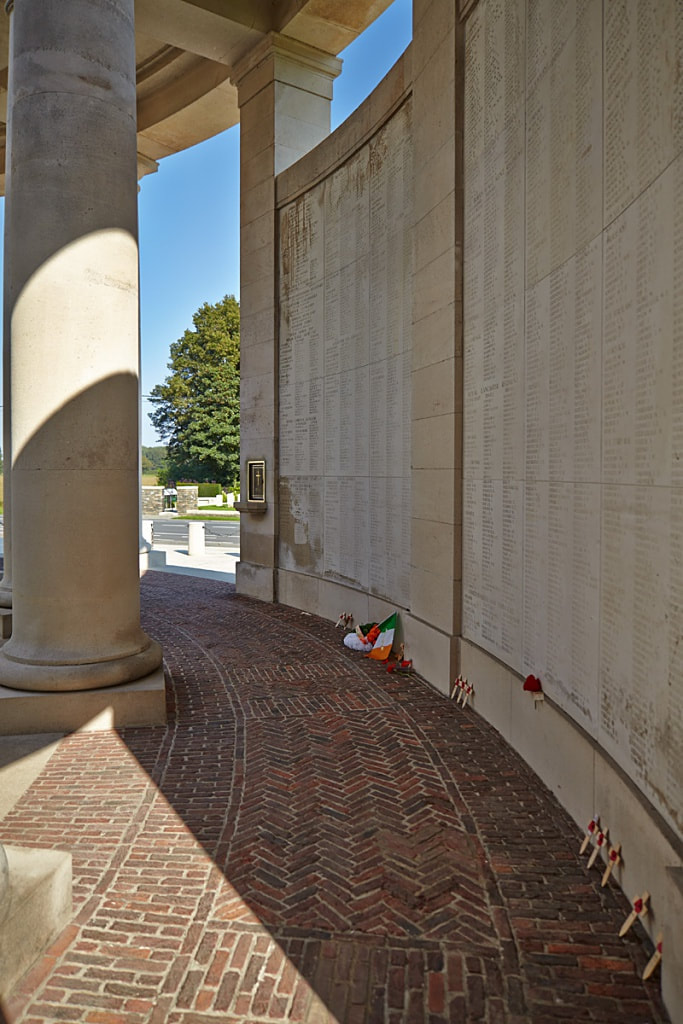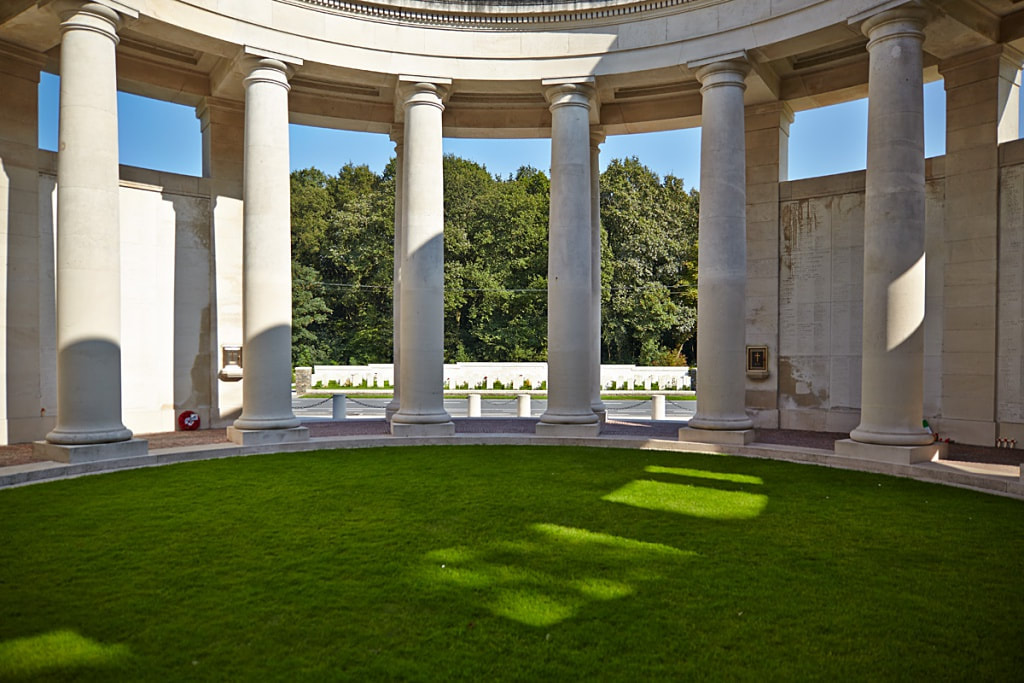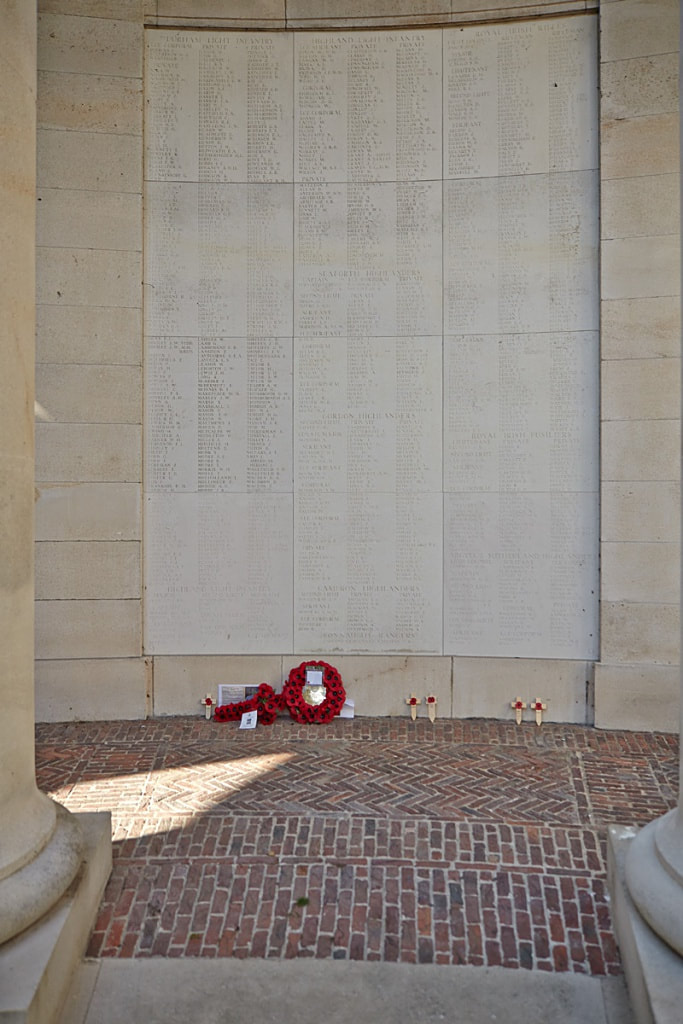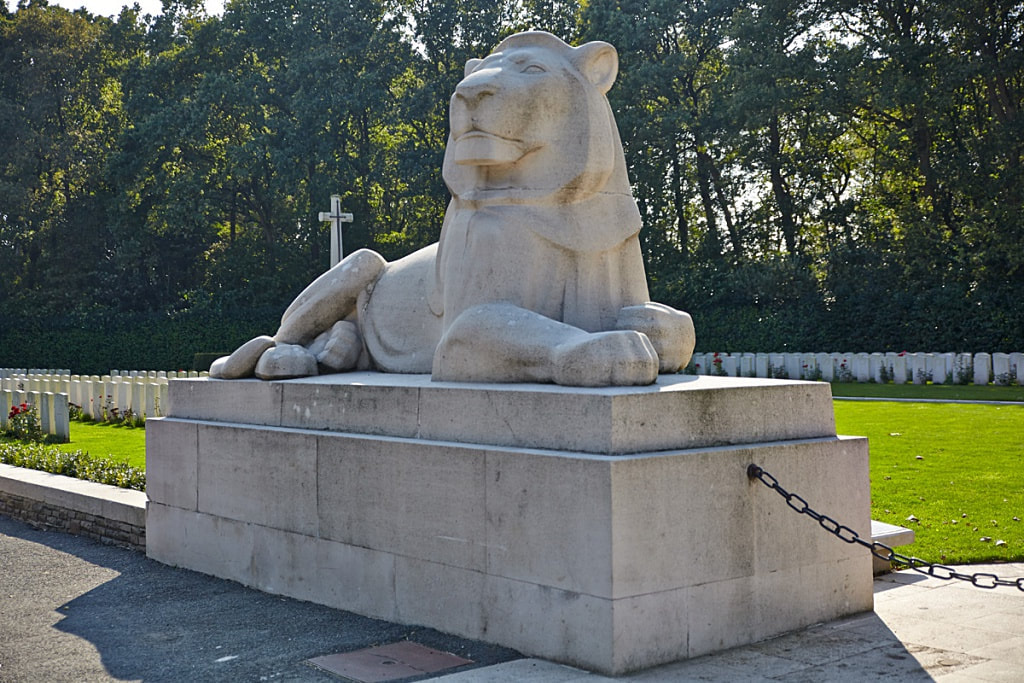PLOEGSTEERT MEMORIAL
Hainaut
Belgium
GPS Coordinates - Latitude: 50.7378, Longitude: 2.88228
Roll of Honour
Listed by Surname
Location Information
The Ploegsteert Memorial stands in Berks Cemetery Extension, which is located 12.5 Kms south of Ieper town centre, on the N365 leading from Ieper to Mesen (Messines), Ploegsteert and on to Armentieres.
From Ieper town centre the Rijselsestraat runs from the market square, through the Lille Gate (Rijselpoort) and directly over the crossroads with the Ieper ring road. The road name then changes to the Rijselseweg (N336). 3.5 Kms along the N336 lies a fork junction with the N365. The N365, which forms the right hand fork, leads to the town of Mesen. The Cemetery lies 3 Kms beyond Mesen on the right hand side of the N365, and opposite Hyde Park Corner Royal Berks Cemetery.
Visiting Information
The sounding of the Last Post takes place at the memorial on the first Friday of every month at 7 p.m.
The Panel Numbers quoted at the end of each entry relate to the panels dedicated to the Regiment served with. In some instances where a casualty is recorded as attached to another Regiment, his name may alternatively appear within their Regimental Panels. Please refer to the on-site Memorial Register Introduction to determine the alternative panel numbers if you do not find the name within the quoted Panels.
Historical Information
The PLOEGSTEERT MEMORIAL commemorates 11,347 servicemen of the United Kingdom and South African forces who died in this sector during the First World War and have no known grave. The memorial serves the area from the line Caestre-Dranoutre-Warneton to the north, to Haverskerque-Estaires-Fournes to the south, including the towns of Hazebrouck, Merville, Bailleul and Armentieres, the Forest of Nieppe, and Ploegsteert Wood. The original intention had been to erect the memorial in Lille.
Most of those commemorated by the memorial did not die in major offensives, such as those which took place around Ypres to the north, or Loos to the south. Most were killed in the course of the day-to-day trench warfare which characterised this part of the line, or in small scale set engagements, usually carried out in support of the major attacks taking place elsewhere. It does not include the names of officers and men of Canadian or Indian regiments (they are found on the Memorials at Vimy and Neuve-Chapelle) and those lost at the Battle of Aubers Ridge, 9 May 1915, who were involved in the Southern Pincer (the 1st, 2nd, Meerut and 47th Divisions - they are commemorated on the Le Touret Memorial).
Commemorated on the Memorial: United Kingdom 11,334. South Africa 13. Total 11,347.
Berks Cemetery Extension in which the memorial stands, was begun in June 1916 and used continuously until September 1917. At the Armistice, the extension comprised Plot I only, but Plots II and III were added in 1930 when graves were brought in from Rosenberg Chateau Military Cemetery and Extension, about 1 Km to the north-west, when it was established that these sites could not be acquired in perpetuity. Rosenberg Chateau Military Cemetery was used by fighting units from November 1914 to August 1916. The extension was begun in May 1916 and used until March 1918. Together, the Rosenberg Chateau cemetery and extension were sometimes referred to as 'Red Lodge'.
Total Burials: 876.
Identified Casualties: United Kingdom 464, Australia 180, Canada 149, New Zealand 80. Total 873.
Hyde Park Corner (Royal Berks) Cemetery is separated from Berks Cemetery Extension by a road. It was begun in April 1915 by the 1st/4th Royal Berkshire Regiment and was used at intervals until November 1917. Hyde Park Corner was a road junction to the north of Ploegsteert Wood. Hill 63 was to the north-west and nearby were the 'Catacombs', deep shelters capable of holding two battalions, which were used from November 1916 onwards.
The cemetery contains 83 Commonwealth burials of the First World War and four German war graves.
Total Burials: 87.
Identified Casualties: United Kingdom 81, Germany 2, Australia 1, Canada 1. Total 85.
Unidentified Casualties: Germany 2.
The cemetery, cemetery extension and memorial were designed by Harold Chalton Bradshaw, with sculpture by Gilbert Ledward. The memorial was unveiled by the Duke of Brabant on 7 June 1931.
The Ploegsteert Memorial stands in Berks Cemetery Extension, which is located 12.5 Kms south of Ieper town centre, on the N365 leading from Ieper to Mesen (Messines), Ploegsteert and on to Armentieres.
From Ieper town centre the Rijselsestraat runs from the market square, through the Lille Gate (Rijselpoort) and directly over the crossroads with the Ieper ring road. The road name then changes to the Rijselseweg (N336). 3.5 Kms along the N336 lies a fork junction with the N365. The N365, which forms the right hand fork, leads to the town of Mesen. The Cemetery lies 3 Kms beyond Mesen on the right hand side of the N365, and opposite Hyde Park Corner Royal Berks Cemetery.
Visiting Information
The sounding of the Last Post takes place at the memorial on the first Friday of every month at 7 p.m.
The Panel Numbers quoted at the end of each entry relate to the panels dedicated to the Regiment served with. In some instances where a casualty is recorded as attached to another Regiment, his name may alternatively appear within their Regimental Panels. Please refer to the on-site Memorial Register Introduction to determine the alternative panel numbers if you do not find the name within the quoted Panels.
Historical Information
The PLOEGSTEERT MEMORIAL commemorates 11,347 servicemen of the United Kingdom and South African forces who died in this sector during the First World War and have no known grave. The memorial serves the area from the line Caestre-Dranoutre-Warneton to the north, to Haverskerque-Estaires-Fournes to the south, including the towns of Hazebrouck, Merville, Bailleul and Armentieres, the Forest of Nieppe, and Ploegsteert Wood. The original intention had been to erect the memorial in Lille.
Most of those commemorated by the memorial did not die in major offensives, such as those which took place around Ypres to the north, or Loos to the south. Most were killed in the course of the day-to-day trench warfare which characterised this part of the line, or in small scale set engagements, usually carried out in support of the major attacks taking place elsewhere. It does not include the names of officers and men of Canadian or Indian regiments (they are found on the Memorials at Vimy and Neuve-Chapelle) and those lost at the Battle of Aubers Ridge, 9 May 1915, who were involved in the Southern Pincer (the 1st, 2nd, Meerut and 47th Divisions - they are commemorated on the Le Touret Memorial).
Commemorated on the Memorial: United Kingdom 11,334. South Africa 13. Total 11,347.
Berks Cemetery Extension in which the memorial stands, was begun in June 1916 and used continuously until September 1917. At the Armistice, the extension comprised Plot I only, but Plots II and III were added in 1930 when graves were brought in from Rosenberg Chateau Military Cemetery and Extension, about 1 Km to the north-west, when it was established that these sites could not be acquired in perpetuity. Rosenberg Chateau Military Cemetery was used by fighting units from November 1914 to August 1916. The extension was begun in May 1916 and used until March 1918. Together, the Rosenberg Chateau cemetery and extension were sometimes referred to as 'Red Lodge'.
Total Burials: 876.
Identified Casualties: United Kingdom 464, Australia 180, Canada 149, New Zealand 80. Total 873.
Hyde Park Corner (Royal Berks) Cemetery is separated from Berks Cemetery Extension by a road. It was begun in April 1915 by the 1st/4th Royal Berkshire Regiment and was used at intervals until November 1917. Hyde Park Corner was a road junction to the north of Ploegsteert Wood. Hill 63 was to the north-west and nearby were the 'Catacombs', deep shelters capable of holding two battalions, which were used from November 1916 onwards.
The cemetery contains 83 Commonwealth burials of the First World War and four German war graves.
Total Burials: 87.
Identified Casualties: United Kingdom 81, Germany 2, Australia 1, Canada 1. Total 85.
Unidentified Casualties: Germany 2.
The cemetery, cemetery extension and memorial were designed by Harold Chalton Bradshaw, with sculpture by Gilbert Ledward. The memorial was unveiled by the Duke of Brabant on 7 June 1931.
136414 Sapper William Hackett, V. C.
254th Tunnelling Coy. Royal Engineers.
27th June 1916, aged 43.
Panel 1.
Son of the late John and Harriet Hackett, of Nottingham; husband of Alice Flinders (formerly Hackett), of 53, Cross Gate, Mexborough, Rotherham.
Citation:
An extract from "The London Gazette," dated 4th Aug., 1916, records the following:-"For most conspicuous bravery when entombed with four others in a gallery owing to the explosion of an enemy mine. After working for 20 hours, a hole was made through fallen earth and broken timber, and the outside party was met. Sapper Hackett helped three of the men through the hole and could easily have followed, but refused to leave the fourth, who had been seriously injured, saying," I am a tunneller, I must look after the others first." Meantime, the hole was getting smaller, yet he still refused to leave his injured comrade. Finally, the gallery collapsed, and though the rescue party worked desperately for four days the attempt to reach the two men failed. Sapper Hackett well knowing the nature of sliding earth, the chances against him, deliberately gave his life for his comrade".
8185 Private James Mackenzie, V. C.
2nd Bn. Scots Guards.
19th December 1914, aged 27.
Panel 1.
Son of Mrs. Marion Mackenzie, of 22, Terregles St., Maxwelltown, Dumfries.
Citation
An extract from "The London Gazette," dated 16th Feb., 1915, records the following:-"For conspicuous bravery at Rouges Bancs on the 19th Dec., in rescuing a severely wounded man from in front of the German trenches, under a very heavy fire and after a stretcher-bearer party had been compelled to abandon the attempt. Private Mackenzie was subsequently killed on that day whilst in the performance of a similar act of gallant conduct."
Captain Thomas Tannatt Pryce, V. C., M. C and Bar.
4th Bn. Grenadier Guards,
13th April 1918, aged 32.
Panel 1.
Son of Thomas and Rosalie S. Pryce, of Pentreheylin Hall Mont; husband of Margaret Sybil Pryce, of Craufurd Lodge, Maidenhead, Berks.
Citation
An extract from "The London Gazette," dated 21st May, 1918, records the following-"For most conspicuous bravery, devotion to duty, and self-sacrifice when in command of a flank on the left of the Grenadier Guards. Having been ordered to attack a village he personally led forward two platoons, working from house to house, killing some thirty of the enemy, seven of whom he killed himself. The next day he was occupying a position with some thirty to forty men, the remainder of his company having become casualties. As early as 8.15 a.m., his left flank was surrounded and the enemy was enfilading him. He was attacked no less than four times during the day, and each time beat off the hostile attack, killing many of the enemy. Meanwhile the enemy brought three field guns to within 300 yards of his line, and were firing over open sights and knocking his trench in. At 6.15 p.m., the enemy had worked to within sixty yards of his trench. He then called on his men, telling them to cheer and charge the enemy and fight to the last. Led by Captain Pryce, they left their trench and drove back the enemy with the bayonet some 100 yards. Half an hour later the enemy had again approached in stronger force. By this time Captain Pryce had only 17 men left, and every round of his ammunition had been fired. Determined that there should be no surrender, he once again led his men forward in a bayonet charge, and was last seen engaged in a fierce hand-to-hand struggle with overwhelming numbers of the enemy. With some forty men he had held back at least one enemy battalion for over ten hours. His company undoubtedly stopped the advance through the British line, and thus had great influence on the battle."
Memorial pictures in this gallery © Werner Van Caneghem
Shot at Dawn
8278 Private Archibald Browne, 2nd Bn. Essex Regiment, executed for desertion 19th December 1914, aged 26. Panel 7. Son of Mrs. Elizabeth Browne, of Greene St., Ingatestone, Essex. His battalion had seen action at Mons, Le Cateau, the Marne & the Aisne. He deserted after assisting a sick soldier to a First Aid Post, but was soon arrested — in civilian clothes -- by the French police after breaking into a house in Hazebrouck. At trial, he stated that he had been looking for his unit, after escaping from capture by the Germans. (Putkowski, p 28)
9689 Private Thomas Hope, 2nd Bn. Leinster Regiment, executed for desertion 2nd March 1915. Panel 10. Son of Mrs B. Hope, of 5, Mill Road, Mullingar, Co. Westmeath. After 2 months in his battalion, he failed to return to the front line trenches after being detailed to fetch rations from the rear. Some 6 weeks later, he was arrested in nearby Armentières, masquerading as a Lance Corporal of the Military Police. At trial he claimed to have been captured after returning with the rations, to have escaped & to have crossed back to the British lines to look for his battalion in Armentières. He had 2 previous convictions for being absent without leave; & his commanding officer averred that Hope had made up his mind not to serve creditably & to avoid all military duty. (Putkowski, p 36)
8747 Private Albert Henry Pitts, 2nd Bn. Royal Warwickshire Regiment, executed for desertion 8th February 1915. Panel 2 and 3. Husband of Mrs. A.L. Pitts, of 44, King Road, Bengeworth, Evesham. He left his battalion when under fire in the Ypres Salient, & was arrested some 2 months later in Boulogne. (Putkowski, p 33)
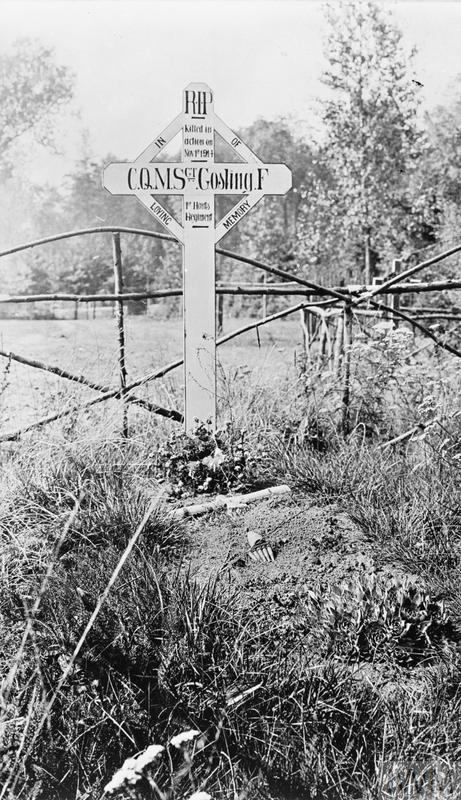
Original grave of 7012 Company Quarter-Master Serjeant, Frederick Gosling, 1st Bn. Hampshire Regiment, 1st November 1914. Despite having such an obvious burial place, his remains were either not found or unidentifiable and he is now commemorated on Panel 6 of the Ploegsteert Memorial. © Jeremy Gordon-Smith


